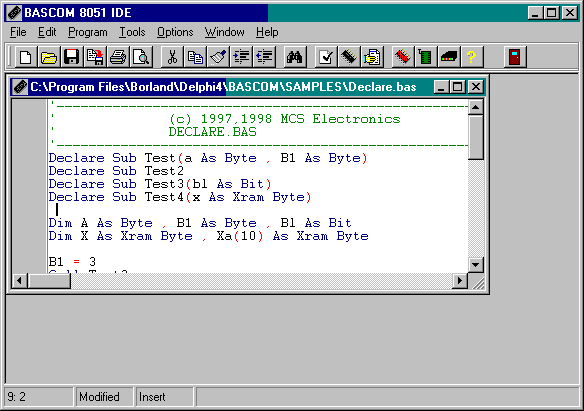CAN GM1 possible applications
- Integrated system that can be used directly on the board
developed by the user a macro component.
- Connection on CAN networks with your own protocols or with
standard protocols type CANopen, DeviceNet, SDS, CAN Kingdom
etc.
- Smart intelligent nodes with local functionalities as PID
algorithms for controlling temperatures, motors, valves, etc.
- Teleacquisition and telecontrol on medium and low distances.
- Converter CAN <-> asynchronous serial line.
- Converter CAN <-> I2C BUS line.
- Data acquisition (either digital or analog) via CAN line.
- Home automation: lights turning ON/OFF, heating and cooling
systems control, supervision of electric devices, security and
acces control systems.
- Car automation: lights turning ON/OFF, heating and cooling
systems control, supervision of electric devices, anti-teft and
acces control systems, functionality checks.
- Add CAN line in an existing system already installed.
- Didactics: CAN GM1 offers a very low cost to learn
CAN, we have many starter kits options. For this purpose it is
likewise interesting the CAN GMT support Mini Module.
- Whenever there is a short time to market: the user can see
a prototype or even a ready product in one week.
- Decentralized systems as robots, automation of production
line machines, big factory automations.
- Monitor of CAN messages in an existing system for validation
or test purpose.
|
|
F E A T U R E
- Standard container with 28 pin male socket, dual in
line, 100 mils pitch, 600 mils width.
- Very small dimension: 25,5 x 42,7 x 14,3 mm.
- Weight:11,8 g.
- 4 layers printed circuit to obtain best noisy resistance
and best EMI performance.
- No external programmer is needed as CAN GM1 is a grifo® ISP
(In System Programming) Mini Module. FLASH of Micro
is Programmable and Erasable by using serial line only.
- Micro FLASH programming or deleting can be managed
by using the FLIP program
available from ATMEL.
- Single power supply required +5Vdc 26mA (the current consumption
can change according with module connections).
- Availability of power saving setting as idle mode and power
down mode.
- Atmel T89C51CC01
microcontroller (8051 code compatibile) with 14,74 Mhz crystal.
- The CAN GM1 can be programmed both through UART
and through CAN line.
- Programmable machine speed at 12 or 6 clock cycle.
- 32K FLASH for code, 2K FLASH for boot loader, 256 bytes RAM
for data, 1K ERAM for data, 2K EEPROM for data.
- 8 A/D converter channels with 10 bits resolution, 20 µsec
conversion time.
- A/D reference voltage available on connector.
- 14 interrupt sources with 4 priority levels.
- 3 Timers Counters up to 16 bits
- 5 PCA channels up to 16 bits with PWM, watch dog, compare,
capture, etc. functionality.
- 22 digital I/O lines available on connector. Some of these
lines have multiple functions.
- Hardware serial line with programmable Baud Rate up to 115200
Baud, RS 232 buffered or at TTL level.
- Transceiver MAX202E, for RS 232 serial line, with ESD protection
up to ±15KV.
- High speed CAN communication
line.
- CAN controller compatible with
2.0 A and 2.0 B standards.
- High speed transceiver 82C250 for CAN
line up to 1 Mbit (ISO-11898).
- Reset and power supply control circuit based on MAX825.
- Software I2C BUS line, available on connector.
- Philips PCF
8583 Real Time Clock capable to manage day, month, year,
week day, hours, minutes, seconds and to generate periodic interrupts.
- 240 bytes of SRAM for configuration parameters.
- RTC and SRAM backed with on board Lithium battery and driven
by software I2C BUS line.
- 8 configuration dip switches, with 3 dips acquired by software.
- 2 status LEDs managed by software through digital I/O lines.
- Internal FLASH and EEPROM can be managed through In System
Programming, or when the module is already mounted, by using
the serial communication line or the CAN line.
- Freeware software for PC, that supports the ISP programmation
to dowload the generated code, inside on board FLASH.
- Wide range of development tools as: Assembler (MCA51); C
compiler (µC/51, SYS51CW, DDS Micro C51); BASIC compiler
(BASCOM 8051); PASCAL compiler (SYS51PW); etc.
- Posibilities to implement higher level protocols, such as
CANopen, DeviceNet etc.
- Long list of demo programs and use examples supplied under
source form, duly remarked, for the available development tools.
|
















 Es. BAS.
K51
Es. BAS.
K51